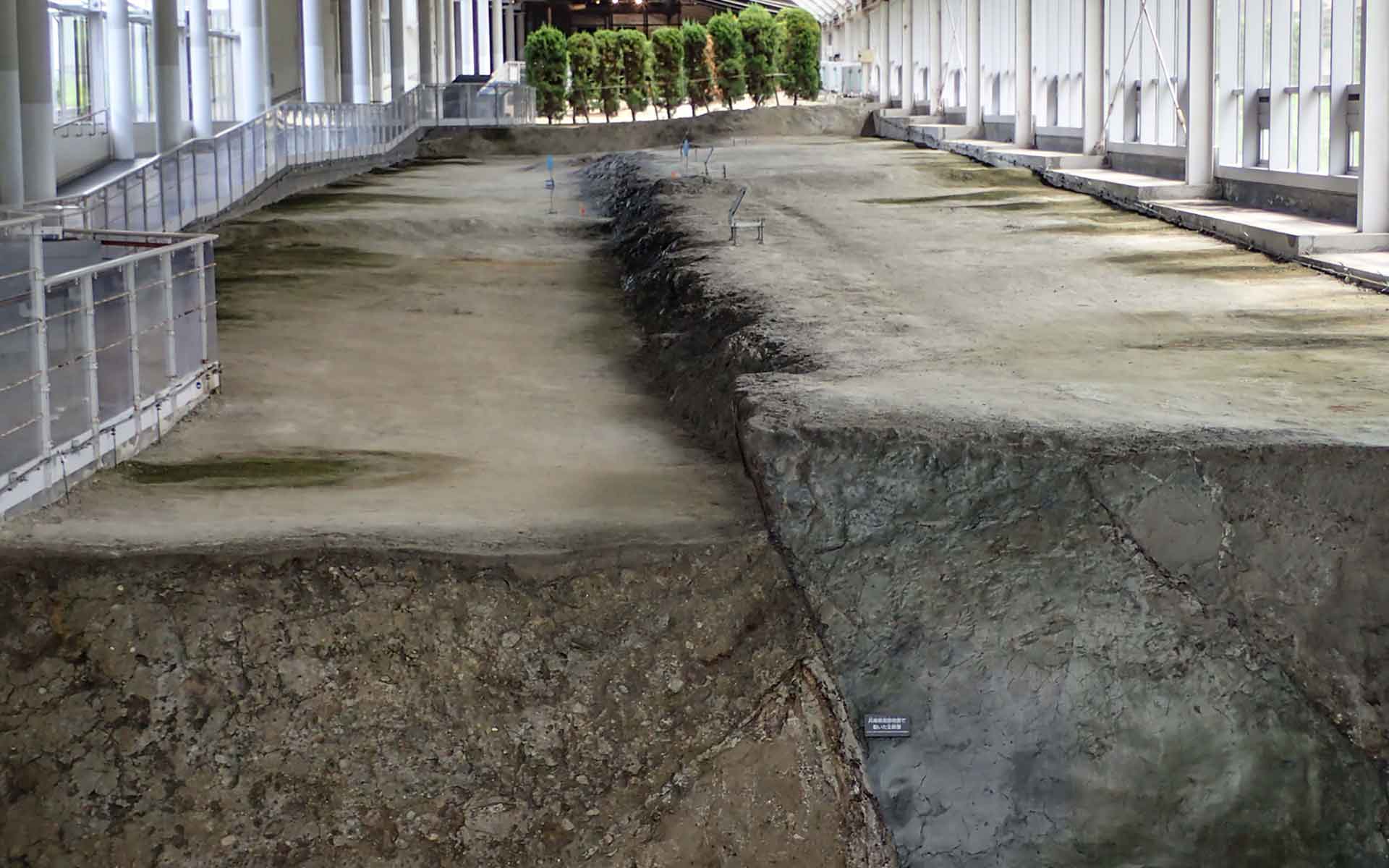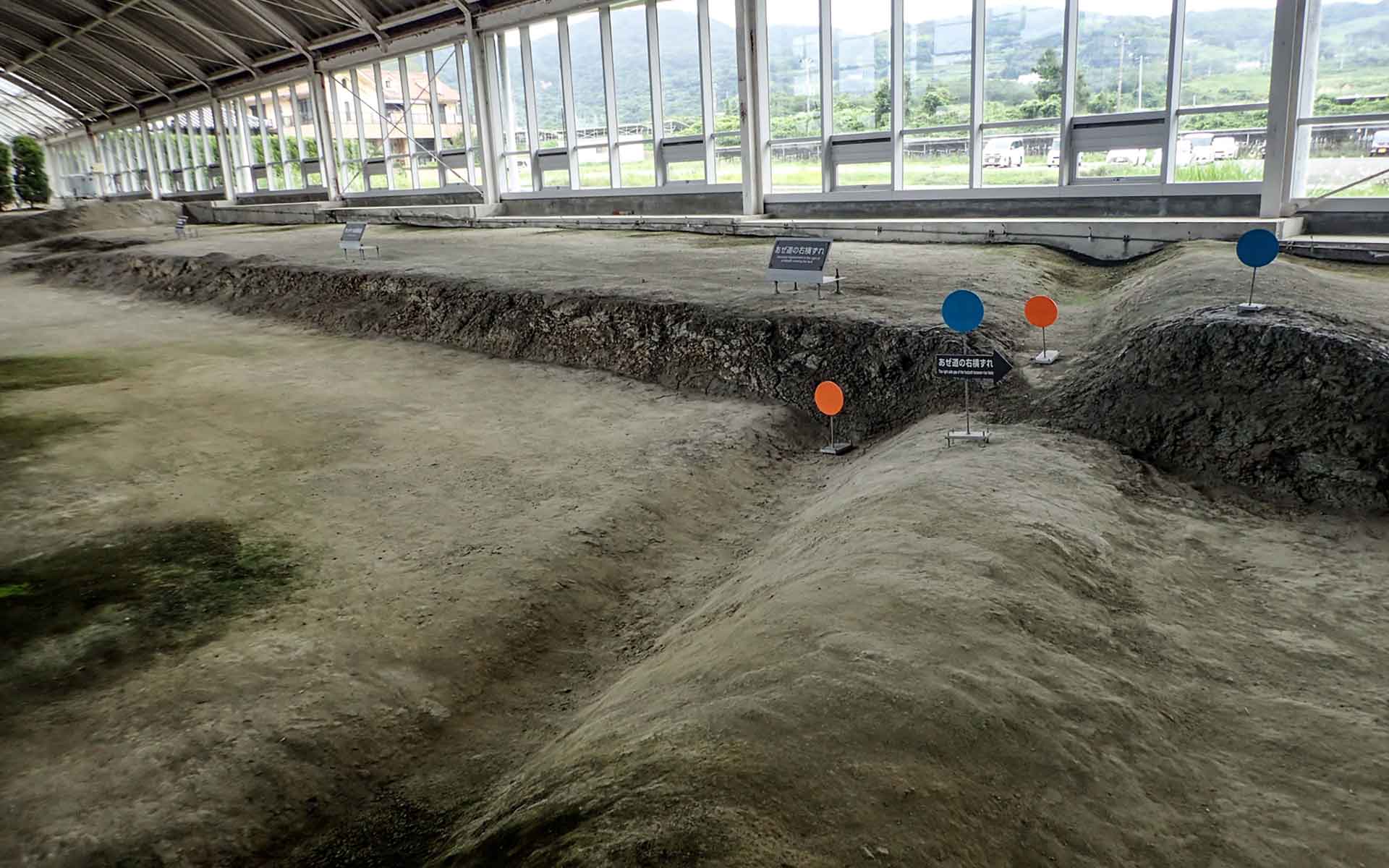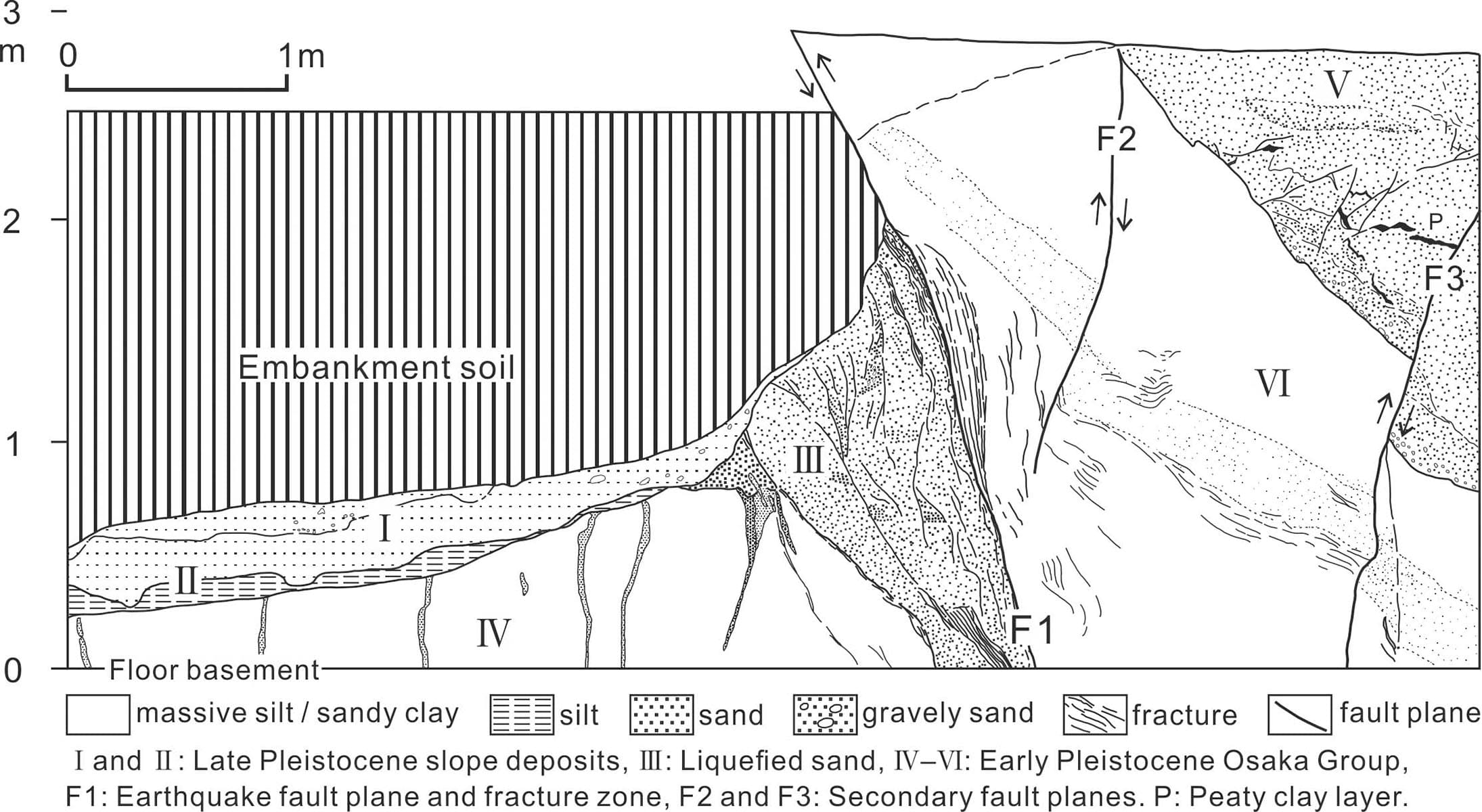
Northeastern section of the earthquake fault trench inside the Nojima Fault Preservation Pavilion in the Hokudan Earthquake Memorial Park. (Shigehiro Kato).
Geological Period
Quaternary Modern (1995)
Main geological interest
Tectonics
Geomorphology and active geological processes
Location
Awaji City, Hyogo Prefecture, Japan.
34°33’00.0″N, 134°56’16.0″E
Northeastern section of the earthquake fault trench inside the Nojima Fault Preservation Pavilion in the Hokudan Earthquake Memorial Park. (Shigehiro Kato).
The fault that caused the 1995 Kobe Earthquake.
“Earthquake fault” is a surface displacement that is important evidence of both the earthquake and the resultant disaster. The preservation of earthquake faults is extremely rare because they are soon flattened by landowners to recover their livelihoods in addition to the difficulty in conservation techniques and management. Fortunately, immediately after the Kobe Earthquake, the Nojima Fault was preserved for educational and research purposes, and the topography and damaged condition of this fault were preserved in the best way possible (Katoh, 2020). As in Taiwan, the technique and management methods developed here have become the standard for fault conservation.
- Geological description
The Nojima Fault is an active fault that generated the “Hyogo-ken Nambu Earthquake” (Kobe Earthquake) (M7.3), which hit the southern part of Hyogo Prefecture, central Japan, on January 17, 1995, killing approximately 6,400 people (Ando et al., 2001; Awata et al., 1996). The fault extends northeastward, intermittently traceable on the surface, for a total length of approximately 9 km from Hokudan to Ichinomiya towns (both now Awaji City) in the northern part of Awaji Island. This is a reverse fault with a right-lateral strike-slip component, showing the maximum horizontal and vertical displacements of 2.1 and 1.2 m, respectively (Lin and Uda, 1996). The Nojima Fault is typically exposed for approximately 185-m long in Hokudan Town, with approximately four-fifths of it preserved in the building, Nojima Fault Preservation Pavilion of Awaji City, which is open to the public. A trench inside the building exhibits the cross section of the fault, whichhas a vertical displacement of 0.2–0.5 m that uplifted the southeast side with a right-lateral displacement of 0.7–1.5 m (Takemura et al., 1998). The main fault and parallel-extending bifurcated fault with destroyed paved roads, displaced ridges, drainage channels, and forest hedges are preserved.
- Scientific research and tradition
Rupture propagation along the Nojima Fault is discussed from detailed along-fault distributions of vertical and horizontal displacements. Based on trenching surveys and analysis of nearby drilling cores, the fault was reactivated many times during the late Quaternary with a recurrence interval of approximately 2000 years (Lin and Nishiwaki, 2019).
- Reference
Ando, M. (2001) ‘Geological and geophysical studies of the Nojima Fault from drilling: An outline of the Nojima Fault Zone Probe’, Island Arc, 10(3–4), pp. 206–214. Available at: https://doi.org/10.1111/j.1440-1738.2001.00349.x.
Awata Y. et al. (1996) ‘Surface Fault Ruptures on the Northwest Coast of Awaji Island Associated with the Hyogo-ken Nanbu Earthquake of 1995, Japan’, Zisin (Journal of the Seismological Society of Japan. 2nd ser.), 49(1), pp. 113-124 (in Japanese with English abstract). Available at: https://doi.org/10.4294/zisin1948.49.1_113.
Katoh, S. (2020) ‘Preservation and practical use of recent earthquake faults in Japan and Taiwan: the past, present and near future’, in New Development in Active Fault Studies – 25 years since the 1995 Kobe earthquake. Hokudan International Symposium on Active Faulting, Okumura, K., Toda, S. and Azuma, T. eds, pp. 48–51.
Lin, A. and Nishiwaki, T. (2019) ‘Repeated Seismic Slipping Events Recorded in a Fault Gouge Zone: Evidence From the Nojima Fault Drill Holes, SW Japan’, Geophysical Research Letters, 46(3), pp. 1276–1283. Available at: https://doi.org/10.1029/2019GL081927.
Lin, A. and Uda, S. (1996) ‘Morphological characteristics of the earthquake surface ruptures on Awaji Island, associated with the 1995 Southern Hyogo Prefecture Earthquake’, Island Arc, 5(1), pp. 1–15. Available at: https://doi.org/10.1111/j.1440-1738.1996.tb00008.x.
Takemura K. et al. (1998) ‘Excavation survey of the 1995 surface rupture in the Nojima Fault Preservation Pavilion at Hokudan Town, Tsuna County, Hyogo Prefecture, Japan’, Humans and Nature, (9), pp. 57-72 (in Japanese with English abstract).
- Author(s)
Tadahiro Shibata
Agency for Cultural Affairs
Shigehiro Kato
Museum of Nature and Human Activities, Hyogo
Setsuya Nakada
The University of Tokyo (presently NIED)


